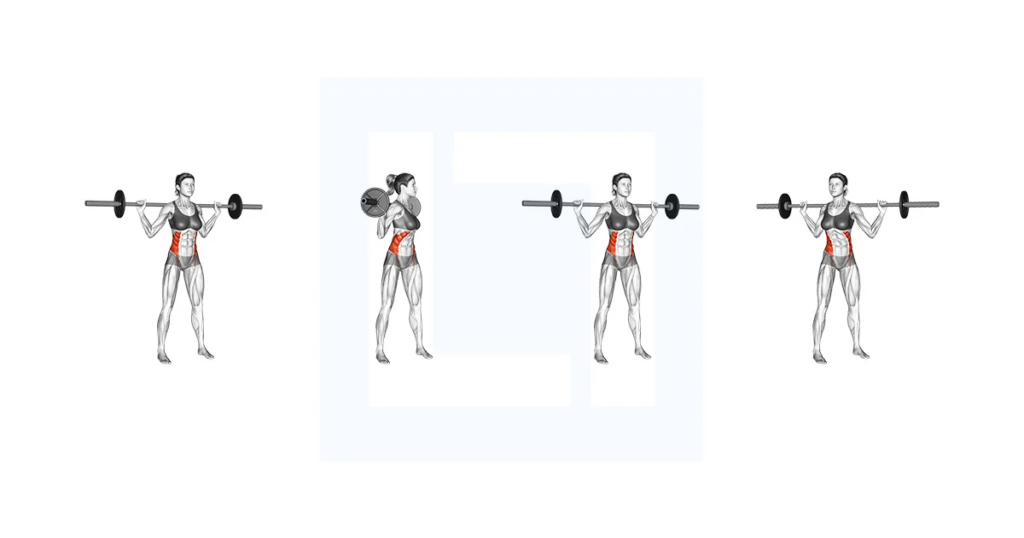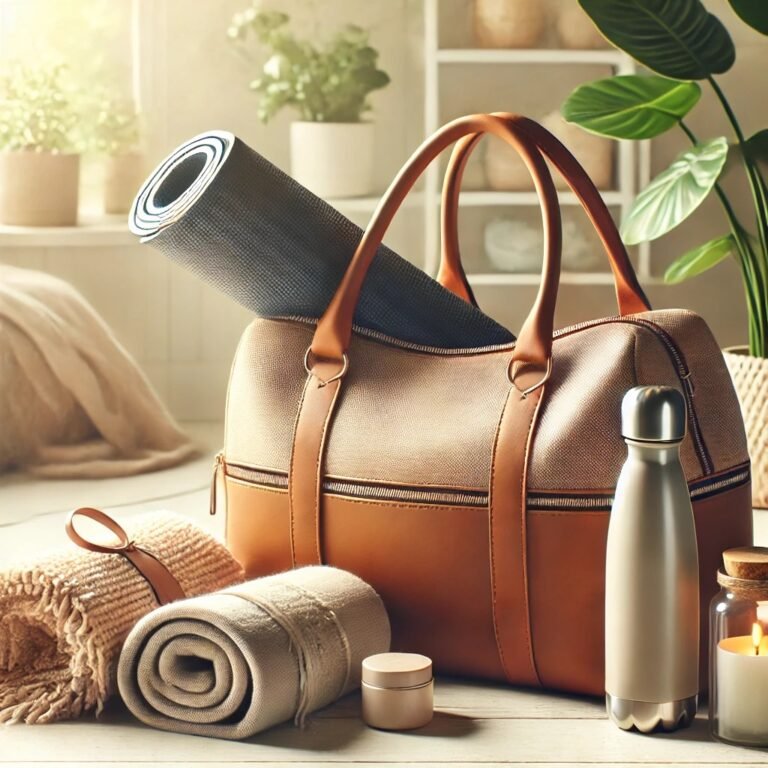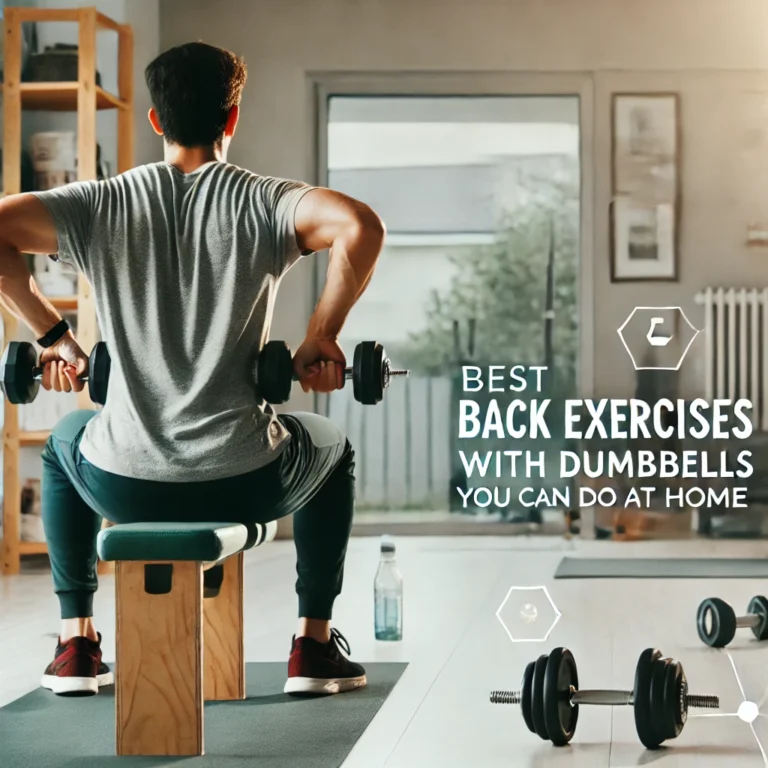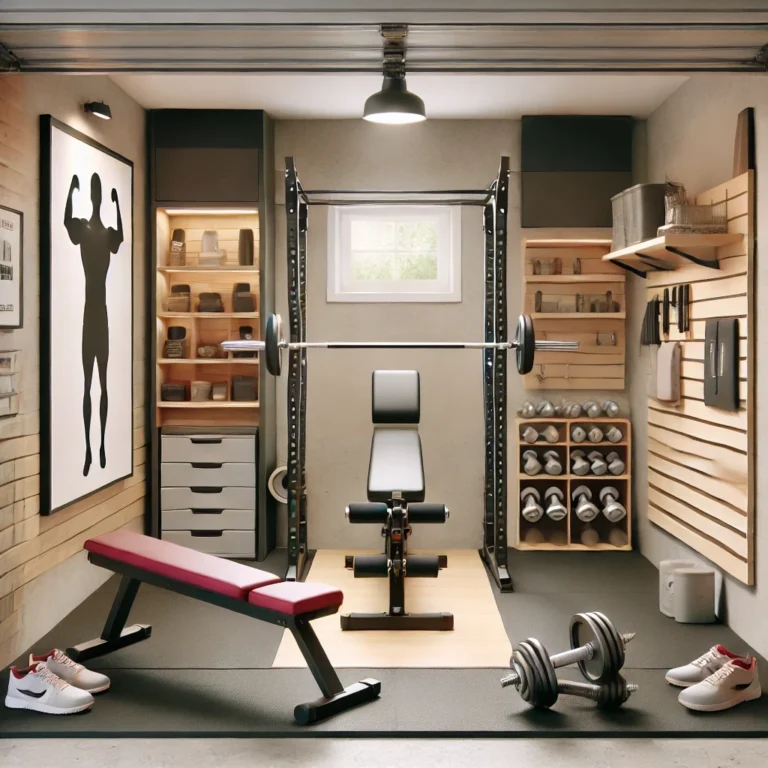When it comes to building strength and versatility in your home gym, the barbell is one of the most essential pieces of equipment. From beginner-friendly exercises to advanced weightlifting routines, barbells offer unmatched flexibility in targeting various muscle groups. Whether you’re focusing on strength training, toning, or muscle building, incorporating a barbell into your workouts can take your fitness journey to the next level.
In this guide, we’ll explore everything you need to know about barbells: the different types available, how to use them, exercises that maximize their benefits, and why they’re a must-have for any home gym setup. If you’re just getting started or looking to expand your equipment, check out our Ultimate Guide to Home Gym Equipment for a complete overview of what you need to create the perfect workout space at home.
Types of Barbells for Home Gyms
Choosing the right barbell for your home gym is crucial to optimizing your workouts and ensuring you have the right equipment for your goals. Here are the most common types available, along with their dimensions, weights, and uses, to help you make an informed decision.
1. Standard Barbells

Standard barbells are the most basic type, typically used for lighter workouts or for beginners. They are often found in home gym setups due to their affordability and ease of use.
Dimensions: 5-7 feet in length.
Weight: Around 15-20 pounds (7-9 kg).
Uses: Ideal for exercises like bicep curls, overhead presses, and light squats. They typically have a smaller diameter (around 1 inch) and may not support heavy weights.
However, they are not recommended for heavy lifting or Olympic-style exercises, as they lack the flexibility and strength required for such movements.
2. Olympic Barbells

Olympic barbells are the gold standard for strength training and are used in most commercial gyms. They are built to handle more weight and provide a higher level of durability and flexibility.
Dimensions: 7.2 feet (2.2 meters) in length.
Weight: 45 pounds (20 kg) for the men’s barbell, 33 pounds (15 kg) for the women’s barbell.
Uses: Perfect for compound lifts such as squats, deadlifts, bench presses, and Olympic movements like snatches and cleans. Olympic barbells also have rotating sleeves to reduce torque on your wrists during lifts.
They are typically used with Olympic weight plates, which have a larger hole diameter (2 inches) compared to standard plates.
3. Hex/Trap Barbells

The hex or trap barbell is uniquely designed in a hexagonal shape, allowing the user to stand in the centre of the bar. This type of barbell is popular for performing deadlifts and shrugs because it shifts the centre of gravity, making lifts safer for the lower back.
Dimensions: Varies, but typically 56-60 inches in length.
Weight: Around 45-55 pounds (20-25 kg).
Uses: Primarily used for deadlifts, shrugs, and farmers’ walks. The design encourages proper posture, reducing strain on the lower back during lifting.
These are an excellent option for beginners or those with mobility issues who want to perform deadlifts safely.
4. EZ Curl Bars

The EZ curl bar is shorter and has a zig-zag or curved design that makes it easier to grip, particularly for curling movements. It’s designed to take pressure off the wrists and elbows during exercises, making it ideal for isolation work.
Dimensions: 4-4.5 feet in length.
Weight: Typically 10-20 pounds (4.5-9 kg).
Uses: Best for bicep curls, tricep extensions, and other upper body isolation exercises. The angled grip reduces strain on the joints during these movements.
EZ curl bars are perfect for focused upper body training and can be a great addition to a home gym for users looking to build arm strength.
5. Safety Squat Bars

The safety squat bar features a padded neck and shoulder area and handles that protrude forward, making it easier and more comfortable to hold during squats. It’s designed to help you maintain an upright position during the lift, reducing strain on your shoulders and elbows.
Dimensions: Approximately 7 feet in length.
Weight: Around 60-70 pounds (27-32 kg).
Uses: Primarily used for squats, especially for those who have shoulder or mobility issues. This bar shifts some of the load to your quads and makes squatting more accessible.
Safety squat bars are often seen as a specialty item, but they can be a great tool for progressing in squats while protecting your upper body from strain.
6. Specialty Barbells
Specialty barbells are designed for specific types of training and come in a variety of styles. These include powerlifting bars, deadlift bars, and Swiss bars, each designed to optimize performance in certain lifts.
Powerlifting Bars: Designed for heavy-duty lifts with a rigid and less flexible structure to handle maximal loads. These are ideal for bench presses, squats, and deadlifts.
Deadlift Bars: These are slightly longer and more flexible than Olympic barbells, allowing for better leverage during deadlifts.
Swiss Bars: Also known as football bars, these have multiple neutral grips, making them easier on the shoulders and wrists for pressing movements.
Dimensions: Varies depending on the bar.
Weight: Usually between 40-55 pounds (18-25 kg).
Uses: Each specialty bar targets specific movements or muscle groups. Powerlifting bars are ideal for competition prep, while Swiss bars are great for building upper body strength with less joint stress.
Benefits of Using Barbells in Your Home Gym
Incorporating barbells into your home gym setup is one of the best decisions you can make for a well-rounded, effective fitness routine. Whether you’re new to strength training or an experienced lifter, barbells offer several significant benefits that can enhance your workouts and help you achieve your fitness goals. Here’s why barbells are an essential addition to any home gym:
1. Full-Body Workout Potential

Barbells are incredibly versatile, allowing you to perform exercises that target every major muscle group in your body. From compound lifts like squats, deadlifts, and bench presses to isolation exercises like bicep curls and tricep extensions, barbells can be used for almost any exercise.
Compound movements
Compound movements engage multiple muscle groups simultaneously, helping you build overall strength, improve coordination, and burn more calories. For example, a barbell squat not only targets the legs but also engages the core and lower back for stability, making it a highly efficient exercise.
With a barbell, you can create a comprehensive full-body workout routine that builds strength, increases muscle mass, and improves overall fitness.
2. Scalability: Add Weights as You Progress

One of the biggest advantages is their scalability. As you get stronger and more confident in your lifting abilities, you can easily increase the amount of weight you’re lifting by adding more plates to the barbell.
Progressive overload,
Progressive overload, which involves gradually increasing the resistance you use in your workouts, is a key factor in muscle growth and strength development. With barbells, it’s simple to track and adjust the weight you’re lifting, ensuring you’re continually making progress. Whether you’re lifting 10kg or 200kg, barbells grow with you, offering an unlimited potential for improvement.
3. Versatility: Target Different Muscle Groups

Barbells are among the most versatile pieces of equipment in any gym. With just one barbell, you can perform a wide range of exercises that target various muscle groups, from your legs and back to your chest, shoulders, and arms. Some popular barbell exercises include:
Lower body
- Squats
- Deadlifts
- Lunges
Upper body
- Bench presses
- Overhead presses
- Barbell row.
Core
- Barbell rollouts
- Russian twists
- Landmine rotations
This versatility makes barbells ideal for any type of workout routine, whether your focus is on strength, endurance, hypertrophy (muscle growth), or fat loss. You can easily switch between exercises and tailor your workouts to suit your goals, ensuring that every part of your body gets the attention it needs.
4. Durability and Long-Term Value
Barbells are built to last. Made from durable materials such as high-grade steel, they can withstand years of heavy use without significant wear and tear, making them a great long-term investment for your home gym.
Unlike some other fitness equipment that might break or wear out over time, a high-quality barbell can last a lifetime with proper care. Additionally they are relatively low maintenance. As long as you store them properly and clean them occasionally, they’ll remain in excellent condition for years to come.
This durability, combined with their scalability and versatility, makes one of the most cost-effective pieces of gym equipment you can buy. Once you have a barbell and some weight plates, you have everything you need for a lifetime of strength training at home.
Best Barbell Exercises for Home Workouts
Barbells are an incredibly versatile tool for building strength and muscle. Whether you’re targeting your legs, upper body, or core, a barbell can help you perform a wide range of exercises that promote full-body development. Below is a breakdown of the most effective exercises, organized by muscle group, along with a brief description of how to perform each and the muscles worked.
Check out the best back exercises you can do with dumbbells at home here
Leg Exercises

Upper Body Exercises

Check out some barbell back exercises you can do at home ranging from beginner to advanced here
Core Exercises

How to Choose the Right Barbell for Your Home Gym
Choosing the right one for your home gym can significantly impact the effectiveness and enjoyment of your workouts. With so many options on the market, it’s essential to understand what factors to consider when making your decision. Below are the key aspects you should evaluate to find the perfect barbell for your home gym setup.
1. Budget and Space Considerations
When selecting a barbell for your home gym, budget and available space are two critical factors. Barbells come in a wide range of prices, so you can find options that fit different budgets, but you’ll need to balance affordability with quality and longevity.
Budget
Basic standard barbells are generally less expensive, making them a good choice for beginners or those who don’t plan on lifting very heavy weights. On the other hand, Olympic or specialty barbells tend to be more expensive due to their durability and capacity to handle heavier loads. If you’re serious about strength training, investing in a higher-quality barbell is worthwhile, as it will last longer and perform better over time.
Space
Consider the size of your workout space when selecting a barbell. Standard barbells are usually shorter and lighter, making them more suitable for small spaces. In contrast, Olympic barbells are longer (around 7 feet) and require more room for both storage and use. If you have limited space, a shorter barbell or adjustable barbell set might be more practical.
2. Weight Capacity and Barbell Type
The type of barbell you choose will largely depend on your strength level and workout goals. Understanding the weight capacity and intended use of the barbell is crucial to ensure it meets your needs.
Weight Capacity
Different barbells have varying maximum weight capacities, which is the total amount of weight the bar can safely hold.
- Standard barbells typically have a lower weight capacity around 90kg-140kg, making them more suitable for lighter workouts or beginners.
- Olympic barbells, on the other hand, can support significantly heavier loads, with capacities of 300kg-700kg or more, making them ideal for strength training and advanced lifters.
Barbell Type
The type of barbell you choose will also depend on the type of training you do
- Standard Barbells: Suitable for beginners and those who are more focused on lighter strength training.
- Olympic Barbells: Ideal for heavy lifts and strength-building exercises like squats, deadlifts, and bench presses.
- Specialty Barbells: These include trap bars, EZ curl bars, and powerlifting bars, which are designed for specific lifts and can provide more targeted benefits depending on your workout routine.
Choosing the right type of barbell is important because it will influence the exercises you can perform and how much weight you can safely lift.
3. Materials and Durability
The material of the barbell is another critical factor to consider, especially if you’re planning on using it for heavy or long-term training. High-quality materials can ensure that your barbell lasts through years of use.
Steel Quality
The best barbells are made from high-tensile strength steel, which allows them to handle heavy loads without bending or warping over time. Look for barbells with a high PSI (pounds per square inch) rating, as this indicates the bar’s strength and durability. Olympic and powerlifting barbells often have PSI ratings of 150,000 or higher, which makes them extremely durable and resistant to bending under heavy loads.
Finish
The finish on a barbell is important both for protecting the bar and providing a good grip. Common finishes include:
- Bare Steel: Offers the best grip but requires regular maintenance to prevent rust.
- Chrome: A durable option that resists rust and corrosion, but can be slippery.
- Cerakote or Black Oxide: Provides excellent rust resistance and a good grip without being overly slick.
Knurling
The knurling, or grip texture, of a barbell is another factor that impacts comfort and usability. Barbells with aggressive knurling provide a firmer grip, making them ideal for heavy lifting. However, if you’re just starting out or prefer lighter lifts, a barbell with medium or mild knurling might be more comfortable.
How Barbells Fit into a Home Gym Setup
Integrating barbells into your home gym setup is one of the best ways to enhance your workout flexibility and efficiency. Barbells can be the cornerstone of your strength training routine, allowing you to perform a wide variety of exercises that target multiple muscle groups. However, to get the most out of your barbell and ensure your home gym is well-organized and functional, you need to consider complementary equipment and space-saving solutions. Here’s how you can seamlessly integrate barbells into your home gym setup.
Complementary Equipment for Barbell Workouts
To maximize the effectiveness of your barbell training, it’s essential to invest in a few complementary pieces of equipment. These items will not only help you perform more exercises but will also ensure you have a safe and versatile workout environment.

1.Squat Rack or Power Rack
A squat rack or power rack is a crucial piece of equipment that allows you to perform key barbell exercises like squats, bench presses, and overhead presses safely.
Power rack is more versatile as it includes safety bars, which catch the barbell if you fail a lift, making it ideal for solo workouts.
Squat rack is more compact and may be a better fit for smaller spaces but is still essential for barbell exercises involving heavy weights.
2.Weight Plates:
Barbells are designed to be used with weight plates, which allow you to adjust the resistance as you progress in strength. Consider investing in a set of Olympic weight plates that fit the 2-inch diameter sleeves of most barbells.
Rubber-coated or bumper plates are ideal for home gyms because they are quieter and safer to use on home floors compared to traditional iron plates.
3.Bench
A sturdy adjustable bench is key for performing exercises like the barbell bench press, incline press, and various other upper body movements. Look for a bench that is solid and can support heavy weights while allowing for multiple incline settings.
4.Barbell Collars/Clips
Safety is paramount when lifting, and barbell collars or clips are essential to secure the weight plates on your barbell. This ensures that plates stay in place during lifts, preventing potential accidents.
Storage Solutions for Barbells and Accessories
Keeping your home gym organized is essential, especially when space is limited. Efficient storage solutions for your barbells and weight plates can help you maintain a clutter-free workout environment while also protecting your equipment.

1.Barbell Storage
There are several ways to store your barbell when it’s not in use. Wall-mounted barbell racks are a great option if you want to save floor space, as they allow you to store one or multiple barbells vertically. Floor barbell stands are another alternative, providing a stable place to keep your barbell when it’s not in use.
2.Weight Plate Storage
Weight plates can take up a lot of space, especially if they’re left scattered on the floor. Weight plate trees or storage racks can help you neatly organize your plates. Some power racks also come with built-in weight plate storage pegs, allowing for a compact and convenient solution.
3.Accessory Storage
Keep smaller accessories like barbell collars, resistance bands, and workout gloves organized by using wall hooks or small shelves. This helps keep everything in its place and easily accessible during workouts.
Space-Saving Tips for Smaller Home Gyms
If you’re working with limited space, integrating a barbell into your home gym may seem challenging, but with some smart planning, you can make it work efficiently. Here are a few space-saving tips to help you fit a barbell into a compact home gym:

1.Use a Compact Squat Rack
If space is a concern, opt for a foldable squat rack or a compact half-rack. These racks take up less space while still providing the support needed for barbell exercises. Some foldable racks can even be stored flush against the wall when not in use.
2.Adjustable Weight Plates
If you don’t have room for a full set of weight plates, consider using adjustable weight plates or plate-loaded dumbbells that can also be used with a barbell. These allow you to vary the weight without needing an extensive collection of plates.
3.Utilize Vertical Space
In smaller home gyms, making use of vertical space can free up valuable floor area. As mentioned earlier, wall-mounted barbell racks and wall storage solutions for weight plates can keep your floor space clear for working out.
4.Invest in Multi-Function Equipment
Choose equipment that serves multiple purposes. For instance, a power rack with integrated storage pegs for weight plates can save you space and eliminate the need for a separate storage solution. Additionally, some adjustable benches come with added storage space underneath for smaller accessories like bands and collars.
Barbell Safety Tips and Best Practices
Using barbells in your home gym can be incredibly effective for building strength, but it’s important to prioritize safety to avoid injury. Proper form, technique, and taking the right precautions are essential, especially when lifting heavier weights. Below are key safety tips and best practices to ensure a safe and productive workout.
1. The Importance of Proper Form and Technique
Mastering proper form and technique is crucial for preventing injury and maximizing the effectiveness of your barbell exercises. Incorrect form not only limits the benefits of your workouts but also places undue stress on your joints, muscles, and spine, increasing the risk of injury.
- Start Light: If you’re new to barbell training or trying a new exercise, start with a lighter weight. Focus on perfecting your form before gradually increasing the load.
- Maintain a Neutral Spine: Whether you’re deadlifting, squatting, or performing overhead presses, keeping your spine neutral (with a slight natural curve) will protect your back from strain.
- Core Engagement: Always engage your core muscles during barbell exercises. This provides stability and prevents excess movement that could lead to injury, especially in lifts like squats and deadlifts.
- Bar Path: Pay attention to the path the barbell travels during each movement. For example, during squats or bench presses, the bar should move in a straight vertical line over your centre of gravity to maintain balance and control.
Poor form can lead to muscle imbalances or injuries, so if you’re unsure of your technique, consider recording yourself or working with a coach to make necessary adjustments.
2. Safety Precautions: Spotters and Safety Bars
When lifting heavy weights, it’s important to take extra safety precautions to ensure your personal safety, especially if you’re working out alone at home.
Use a Spotter
Having a spotter is highly recommended for exercises like the bench press or heavy squats. A spotter can assist you if you struggle to lift the weight or fail a rep, reducing the risk of injury. (If you don’t have a spotter, make sure you use equipment that offers similar protection, such as a power rack with safety bars.)
Set Up Safety Bars or Straps
If you’re lifting without a spotter, always use a squat rack or power rack with safety bars or straps. These can catch the barbell if you lose control or fail to complete a lift, preventing the bar from falling on you.
- For Squats: Set the safety bars just below the lowest point of your squat so they can catch the bar if needed.
- For Bench Presses: Adjust the safety bars or straps to the height of your chest so that if you fail a rep, the bar doesn’t press down on your body.
Taking these precautions can give you the confidence to push your limits without risking injury, especially when lifting alone in a home gym.
3. Warm-up and Mobility Routines to Prevent Injury
Warming up before lifting weights is essential for preparing your muscles and joints for the demands of barbell training. A proper warm-up increases blood flow, improves flexibility, and enhances muscle activation, reducing the likelihood of injury.
Dynamic Warm-up
Start with a dynamic warm-up that includes movements like leg swings, arm circles, and bodyweight squats. These exercises help increase your range of motion and activate the muscles you’ll be using during your barbell workout.
- For example, performing bodyweight squats or lunges before barbell squats helps prime the muscles in your legs and hips.
Specific Warm-up Sets
Perform a few warm-up sets with a lighter weight before jumping into your working sets. This allows your muscles to adapt to the movement pattern and helps prevent injury when you progress to heavier weights.
- For instance, if you plan on squatting 100kg, start with a set of squats at 50% of your target weight to loosen up the muscles.
Mobility Work
Incorporating mobility exercises into your routine can improve your range of motion and prevent tightness or stiffness. Focus on areas like the hips, shoulders, and thoracic spine, which are often used during barbell exercises.
- Foam rolling: This helps release tension in the muscles before a workout.
- Hip Openers: Exercises like lunges and deep squats can improve flexibility in the hips and help prevent lower back pain during barbell movements.
Conclusion
Barbells are one of the most versatile and effective pieces of equipment you can add to your home gym. Whether you’re focusing on full-body strength, targeting specific muscle groups, or improving core stability, barbells offer endless possibilities for your workout routine. With various types of barbells available, from standard to Olympic and specialty bars, there’s a barbell suitable for every fitness level and goal.
The ability to scale your workouts by simply adding weight plates ensures that barbells will continue to challenge you as your strength increases. Their durability and long-term value make them a great investment for anyone serious about building a well-rounded home gym.
If you haven’t already, now is the time to start incorporating barbells into your routine. Whether you’re performing squats, deadlifts, or bench presses, barbells offer the tools you need to unlock the full benefits of strength training. By mastering proper form and following the safety tips outlined in this guide, you can take your fitness to the next level, right from the comfort of your home.
For more information on how barbells fit into a complete home gym setup, check out our Ultimate Guide to Home Gym Equipment, where you’ll find detailed advice on building a functional, effective space that supports your fitness goals.






One Comment
Comments are closed.